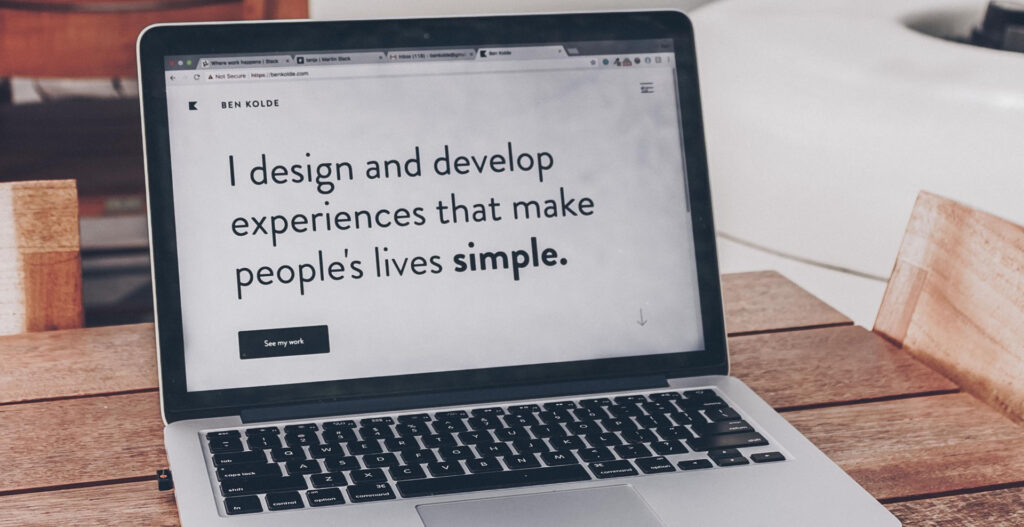Typography is an essential element of website design that can greatly impact the user experience and the overall success of a website. In this blog post, we will explore the role of typography in website design and the best practices for using typography to create effective and visually appealing websites.
What is typography?
Typography refers to the art and technique of arranging type to make written language legible, readable, and appealing when displayed. In the context of website design, typography involves choosing and arranging the font, size, color, and spacing of text to enhance the readability and visual appeal of a website.
The role of typography in website design
Typography plays a crucial role in website design. Here are some of the ways in which typography impacts a website:
Readability: The primary function of typography is to make text legible and readable. The choice of font, size, and spacing can greatly affect the ease with which users can read and comprehend the content on a website. If the typography is hard to read, users may quickly lose interest and move on to other websites.
Brand identity: Typography can also help to create a consistent brand identity for a website. Choosing a specific font and using it consistently throughout the website can help to establish a strong brand identity and make the website more recognizable to users.
Visual hierarchy: Typography can be used to create a visual hierarchy on a website, where the most important information is emphasized and stands out from the rest of the content. Using different font sizes, colors, and styles can help to guide users’ attention and create a more effective website layout.
User experience: Effective typography can also improve the overall user experience of a website. A well-designed website with clear and easy-to-read typography can create a positive impression on users and encourage them to spend more time on the site.
Best practices for using typography in website design
Choose appropriate fonts
Choosing the right font for your website is crucial for creating a good user experience. There are thousands of different fonts to choose from, but not all of them are suitable for web use. When choosing a font for your website, consider the following:
Legibility: The font should be easy to read and not strain the eyes. Avoid fonts with thin strokes or decorative elements that can make the text hard to read.
Compatibility: Choose a font that is compatible with both desktop and mobile devices. Many fonts that look great on desktop may not be optimized for smaller screens.
Consider your brand and the personality you want to convey. Choose a font that aligns with your brand and creates a consistent visual identity.
Use a consistent font hierarchy
Using a consistent font hierarchy throughout your website can make it easier for users to navigate and find the information they need. Here are some tips for creating a consistent font hierarchy:
Use different font sizes for headings, subheadings, and body text. This can help to create a visual hierarchy and make it easier for users to scan the content.
Font styles such as bold, italic, and underlined can be used to emphasize important information.
Also, limit the number of fonts to avoid overwhelming the user.
Use white space effectively
White space is the area of a page that is left blank or unmarked. Effective use of white space can greatly improve the readability and visual appeal of your website. Here are some tips for using white space effectively:
Leave ample white space around text to create a clean and uncluttered look.
Moderate use of line spacing and paragraph spacing to create a clear separation between blocks of text.
Use margins and padding to give your content room to breathe.

Use color effectively
Color can be a powerful tool for creating contrast and emphasizing important information. Here are some tips for using color effectively in your typography:
Use a limited color palette to avoid overwhelming the user.
Use color to create contrast and draw attention to important information.
Avoid using too many bright colors, which can be distracting and overwhelming.
Test your typography
Finally, it is important to test your typography on different devices and browsers to ensure that it is easily readable and visually appealing. Here are some tips for testing your typography:
Test your typography on desktop and mobile devices to ensure that it is optimized for both.
Test your typography in different browsers to ensure that it looks consistent across all platforms.
Get feedback from others to see if they find your typography easy to read and visually appealing.
In conclusion, typography is an essential element of website design that can greatly impact the user experience and the overall success of a website. By following best practices such as choosing appropriate fonts, using a consistent font hierarchy, using white space effectively, using color effectively, and testing your typography, you can create a visually appealing and effective website that is easy to read and navigate.



